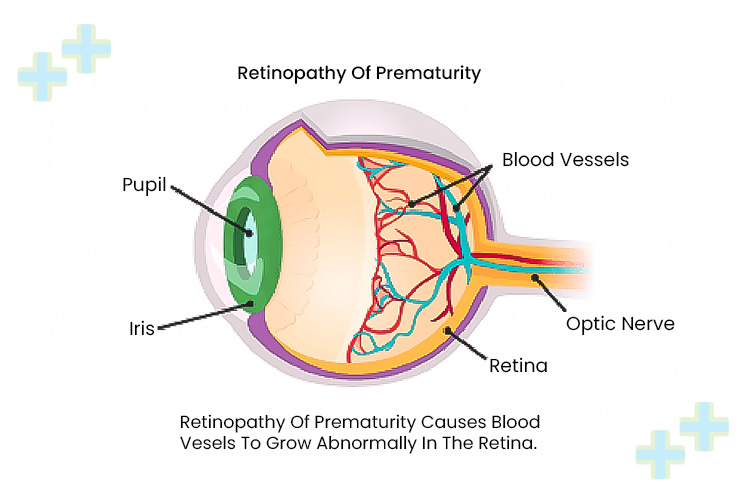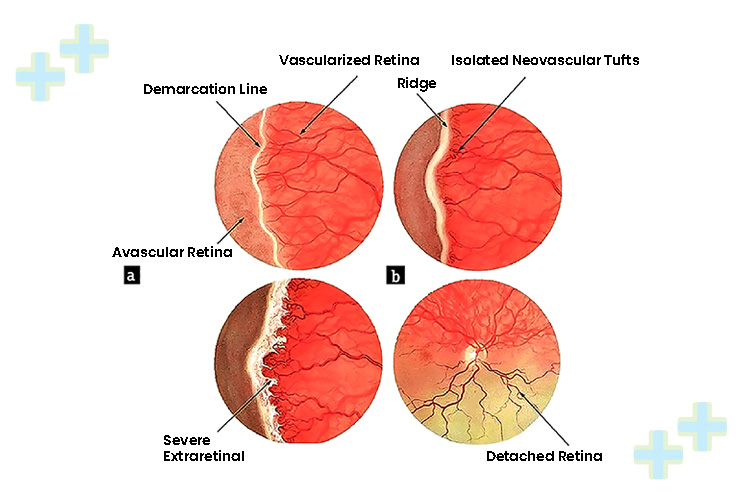A Rundown on Retinopathy of Prematurity
About Retinopathy of Prematurity
Retinopathy of prematurity (abbreviated to ROP) is a potentially blinding eye disorder that affects premature babies. It is also known as retrolental fibroplasia or retinopathy of immaturity. It is characterized by an abnormal growth of the small blood vessels in the back of the eye in the retina, which can lead to retinal detachment and blindness. It occurs in premature babies because their eyes are not fully developed at birth. It is more common in babies born before 31 weeks of gestation or with a birthweight below 1500 g.

Why Do Babies Get It?
Babies get retinopathy of prematurity when the oxygen-rich environment of the womb is replaced by the oxygen-poor environment of the outside world. The lack of oxygen can cause changes in the normal blood vessel growth in the retina leading to ROP. Premature births increase the risk of developing this disorder because babies’ eyes are not fully developed when born before the full term of pregnancy (37-42 weeks). Premature babies are more likely to have an immature vascular system which can lead to the abnormal growth of blood vessels that can cause scarring and damage to the retina. Though the exact cause of ROP is unknown, it is most commonly seen in babies born before 31 weeks gestation, who are exposed to high levels of oxygen, or those born with a very low birth weight.
How to Know If an Infant Has Retinopathy of Prematurity?
Doctors can usually detect whether an infant has retinopathy of prematurity by performing a comprehensive retinal exam. The exam involves using special technology and instruments like an ophthalmoscope to look at the infant’s eyes and look for the presence of swollen or abnormal blood vessels.

How Is It Treated?
Retinopathy of prematurity is treated by controlling the level of oxygen around the infant. Treatment for ROP depends on the severity of the disease. Mild cases may not require treatment. In more severe cases, treatment may include laser therapy, cryotherapy, vitrectomy or surgery, or anti-VEGF injections may also be used to repair the damaged blood vessels. Laser therapy is the use of a powerful beam of light to destroy the abnormal blood vessels. Cryotherapy uses extreme cold to seal off the abnormal blood vessels, preventing them from damaging the retina. Vitrectomy is a surgical procedure in which the vitreous humor (the jelly-like substance that fills the eye) is removed to treat the ROP.

How Successful Is the Treatment?
Treatment for retinopathy of prematurity is usually successful in preventing further damage by halting the progression of the disease and reducing the risk of blindness. However, the earlier the condition is detected, the better the chances of a successful treatment outcome.
Health Trawell Is with You for the Treatment of Retinopathy of Prematurity!
Retinopathy of Prematurity (ROP) is a disorder of a baby’s retina caused by abnormal blood vessels that may develop in the eyes of a premature baby. It is one of the most common causes of vision loss in children, and even blindness, in premature babies. Early diagnosis and treatment are key, as ROP can improve or worsen over time. Treatment is often successful in stabilizing the disease, and in some cases, can provide full recovery. So, if you are contemplating such a treatment for your baby, then Health Trawell is with you to assist you fully!
OUR SERVICES

Cosmetic Surgery

Spine Surgery

Organ Transplant

Orthopedic Surgery

Gynecology Infertility

Ophthalmology

Neurosurgery
Cardiology
YOUR GATEWAY TO HEALTH

